Related Research Articles

The Irish Republican Army was an Irish republican revolutionary paramilitary organisation. The ancestor of many groups also known as the Irish Republican Army, and distinguished from them as the "Old IRA", it was descended from the Irish Volunteers, an organisation established on 25 November 1913 that staged the Easter Rising in April 1916. In 1919, the Irish Republic that had been proclaimed during the Easter Rising was formally established by an elected assembly, and the Irish Volunteers were recognised by Dáil Éireann as its legitimate army. Thereafter, the IRA waged a guerrilla campaign against the British occupation of Ireland in the 1919–1921 Irish War of Independence.
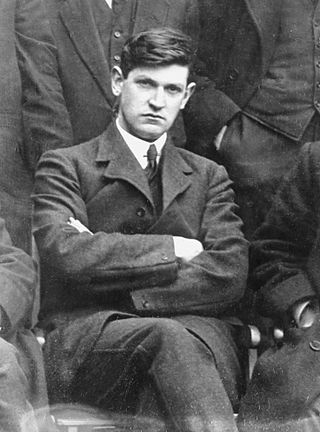
Michael Collins was an Irish revolutionary, soldier and politician who was a leading figure in the early-20th century struggle for Irish independence. During the War of Independence he was Director of Intelligence of the Irish Republican Army (IRA) and a government minister of the self-declared Irish Republic. He was then Chairman of the Provisional Government of the Irish Free State from January 1922 and commander-in-chief of the National Army from July until his death in an ambush in August 1922, during the Civil War.

The Irish War of Independence or Anglo-Irish War was a guerrilla war fought in Ireland from 1919 to 1921 between the Irish Republican Army and British forces: the British Army, along with the quasi-military Royal Irish Constabulary (RIC) and its paramilitary forces the Auxiliaries and Ulster Special Constabulary (USC). It was part of the Irish revolutionary period.

The Auxiliary Division of the Royal Irish Constabulary (ADRIC), generally known as the Auxiliaries or Auxies, was a paramilitary unit of the Royal Irish Constabulary (RIC) during the Irish War of Independence. It was founded in July 1920 by Major-General Henry Hugh Tudor and made up of former British Army officers, most of whom came from Great Britain and had fought in the First World War. Almost 2,300 served in the unit during the conflict. Its role was to conduct counter-insurgency operations against the Irish Republican Army (IRA), acting mainly as a mobile striking and raiding force. It operated semi-independently of the RIC and was mainly deployed to southern and western regions where fighting was heaviest.

Thomas Bernardine Barry, better known as Tom Barry, was a prominent guerrilla leader in the Irish Republican Army (IRA) during the Irish War of Independence and the Irish Civil War. He is best remembered for orchestrating the Kilmichael ambush, in which him and his column wiped out a 18-man patrol of Auxiliaries, killing sixteen men.
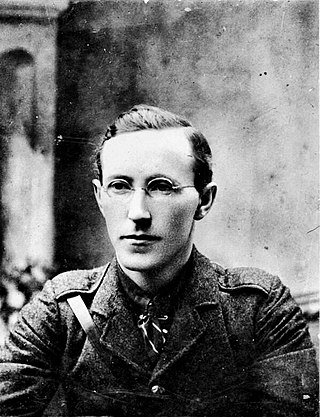
William Fanaghan Lynch was an officer in the Irish Republican Army during the Irish War of Independence of 1919–1921. During much of the Irish Civil War, he was chief of staff of the Irish Republican Army. On 10 April 1923, Lynch was killed whilst trying to escape an encirclement by Free State troops in south Tipperary.
Liam Deasy was an Irish Republican Army officer who fought in the Irish War of Independence and the Irish Civil War. In the latter conflict, he was second-in-command of the Anti-Treaty forces for a period in late 1922 and early 1923.
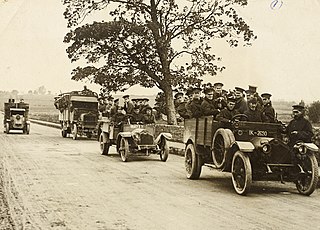
This is a timeline of the Irish War of Independence of 1919–21. The Irish War of Independence was a guerrilla conflict and most of the fighting was conducted on a small scale by the standards of conventional warfare.
The Irish Free State offensive of July–September 1922 was the decisive military stroke of the Irish Civil War. It was carried out by the National Army of the newly created Irish Free State against anti-treaty strongholds in the south and southwest of Ireland.
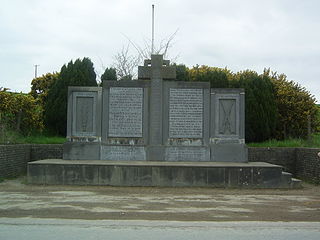
The Crossbarry Ambush or Battle of Crossbarry occurred on 19 March 1921 and was one of the largest engagements of the Irish War of Independence. It took place near the small village of Crossbarry in County Cork, about 20 km south-west of Cork city. About a hundred Irish Republican Army (IRA) volunteers, commanded by Tom Barry, escaped an attempt by about 1,200 British troops to encircle them. During the hour-long battle, ten British troops and three IRA volunteers were killed.

The Kilmichael Ambush was an ambush near the village of Kilmichael in County Cork on 28 November 1920 carried out by the Irish Republican Army (IRA) during the Irish War of Independence. Thirty-six local IRA volunteers commanded by Tom Barry killed sixteen members of the Royal Irish Constabulary's Auxiliary Division. The Kilmichael ambush was politically as well as militarily significant. It occurred one week after Bloody Sunday and marked an escalation in the IRA's campaign.
This is a timeline of the Irish Civil War, which took place between June 1922 and May 1923. It followed the Irish War of Independence (1919–1921), and accompanied the establishment of the Irish Free State as an entity independent from the United Kingdom of Great Britain and Ireland.
Peter Hart was a Canadian historian, specializing in modern Irish history.
The Dunmanway killings, also known as the Bandon Valley Killings, the Dunmanway murders or the Dunmanway massacre, refers to the killing of fourteen males in and around Dunmanway, County Cork and Bandon Valley, between 26–28 April 1922. This happened in a period of truce after the end of the Irish War of Independence and before the outbreak of the Irish Civil War in June 1922. Of the fourteen dead and missing, thirteen Protestants including one Methodist and one was Roman Catholic, which has led to the killings being described as sectarian. Six were killed as purported British informers and loyalists, while four others were relatives killed in the absence of the target. Three other men were kidnapped and executed in Bandon as revenge for the killing of an IRA officer Michael O'Neill during an armed raid. One man was shot and survived his injuries.
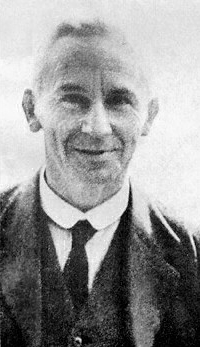
Seán O'Hegarty was a prominent member of the Irish Republican Army in County Cork during the Irish War of Independence. He served as O/C of the Cork No. 1 Brigade of the IRA after the deaths of Tomás Mac Curtain and Terence MacSwiney.

Guerrilla Days in Ireland is a book published by Irish Republican Army leader Tom Barry in 1949. The book describes the actions of Barry's Third West Cork Brigade during the Anglo-Irish War, such as the ambushes at Kilmichael and Crossbarry, as well as numerous other less known attacks made by the Brigade against the British Army, Black and Tans, Auxiliary Division and the Royal Irish Constabulary. The text was originally serialised in The Irish Press in 1948 before being published as a book.
The Protestant Action Group or Loyalist Action Group was a secret loyalist vigilante group active in County Cork during the Irish War of Independence. It was made up of local Protestant unionists who opposed Irish republicanism. The group helped British forces by gathering intelligence on the Irish Republican Army (IRA) and local republicans. It is also alleged to have been involved in the killing of several republicans, most notably the Coffey brothers, who were shot in their home in Enniskean in February 1921. That year, the IRA found intelligence documents belonging to the British Auxiliary Division in Dunmanway, which apparently confirmed the existence of the group, and included a list of names of informers. This resulted in many informers being granted safe passage and protection in England by the British government. During the conflict, the local IRA brigade executed 15 informers, six of whom were Protestants. In April 1922, after a truce had come into effect, IRA members shot dead 13 Protestants in the Dunmanway area. It was claimed they were members of the Action Group, but this is disputed.
The Clonmult ambush took place on 20 February 1921, during the Irish War of Independence.
The guerrilla phase of the Irish Civil War began in August 1922, when the forces of the Irish Free State took all the fixed positions previously held by the Anti-Treaty IRA. The IRA then waged a guerrilla war to try to bring down the new Irish Government and overturn the Anglo-Irish Treaty. This guerrilla campaign was ultimately defeated.
References
- ↑ "Meda Ryan". Amazon.
- ↑ Regan, John M. "Meda Ryan The Kilmichael Ambush, 1920: Exploring the 'Provocative Chapters'" . Retrieved 29 January 2020– via www.academia.edu.
{{cite journal}}: Cite journal requires|journal=(help) - ↑ David Granville. "A letter to historians". archive.irishdemocrat.co.uk. Retrieved 29 January 2020.